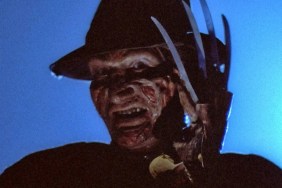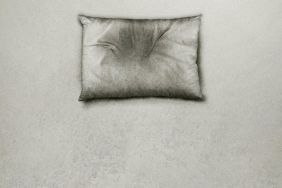
The scariest thing in the world might well be sitting in a darkened room, listening to other people tell you of their strange experiences. For a moment, doubt falls away to the suggestion of someone who so feels they were affected by, or witness to, something supernatural. Director Rodney Ascher understands this, among many other things. His previous works Room 237 and The S from Hell eschewed talking heads in favor of an interpretative kaleidoscope of imagery, film clips and logos, as subjects explained their fears and analysis of such. He takes a somewhat different approach in sleep paralysis doc The Nightmare. Here, its as much about the chill as it is interpretation. The director puts us face-to-face with both his subjects and their visions. If listening is frightening, seeing is believing.
The Nightmare concerns eight people who suffer from the quite common condition of sleep paralysisafter The Nightmares midnight premiere at Sundance, one woman in the Q&A cried in gratitude of the filma phenomenon which takes many hallucinatory forms, but is defined by someone being unable to move, speak or react as falling asleep or awakening. This state, physically scary enough, is often then accompanied by horrifying visions. Though it isnt widely reported on, it is a seeming widespread experience with many claiming at least one occurrence (myself included). Ascher interviews the eight sufferers and then proceeds to fictionally recreate their nightmares on a soundstage, making for twofold terror. In the process, he knocks down boundaries between fiction and documentary, filmmaker and subject, audience and artifice.
The latter two are as simple as keeping a camera moving to reveal both equipment and Ascher in the frame. Later, in one of the recreation sequences, a shadowman finishes his wicked work in one persons nightmare and we follow him across and through the set to anothers. Here, Ascher engages both the commonality of the phenomenon (he and crew admit to experiencing sleep paralysis), as well as the incomprehensible mystic nature of this other plane. This shadowman, a being many of the subjects report to seeing, can move through film and our dreams, and in a way most of us cannot (one subject does discuss lucid dreaming and entering someone elses dreamscape).
Aschers restaging of the nightmares makes sense both in the name of thrills and because art is often how we process actual phenomena or events. At first, Ascher asks the subjects to draw their visions, something well recognize and relate from horror cinema. Then, to really hammer home the impact and give us a window into their lives, Ascher flexes his classical fright film muscles. Dimly lit rooms are invaded by shadows and extraterrestrials (informed and colored in by television static). Theres even a Lynchian break-in by homeless men. Its disturbing, which lends empathy for the subjects and likely a strange comfort if youve ever experienced something similar.
As the film progresses, the subjects offer their own analysis of these events. Some give religious reason, others alien, and still others medical. Some imply its contagious. Ascher and the film of course make no hard case for any explanation. The filmmaker doesnt even consult scientists or doctors. Thats not the point. We take what we will from dreams, from films, from conversations, from frightening nighttime paralysis. In the middle of it allwhen a film is neither documentary nor fiction, when a condition is neither spiritual nor scientificwhere its unknowable, thats what elicits a nightmare.









